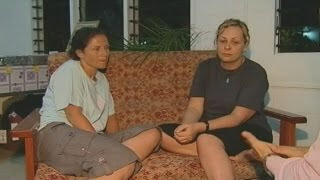Photo courtesy of Pele Wendt.
There are those, who at the first hint of tragedy, will rush with cameras and recorders – to get the story. It’s their job to take the photos. Of headless houses. Crumpled trucks. Dead people floating in a sobered ocean. The photos that will move us. Inspire us. Horrify us. It’s their job to get the story. They film the mother weeping as she clutches a baby covered in bruises. They ask her what happened? They zero in on a man who grips the fence posts for support as he tries to process seeing his wife crushed underneath an angry barrage of debris. They ask him what happened? Tell us, tell the world… They watch the man who finds the body of his mother in a cluster of fallen trees, watch as he weeps, hugs her, takes off his lavalava and covers her from the sun, shooing away the flies. They watch and through their lens – we watch. Curious, concerned and captivated. On 29/09, the world wanted to know what was happening on this cluster of islands in the middle of the Pacific Ocean. And local media were rushing to respond. TVOne and TV3 Samoa both had teams out in the disaster zone on the first day. International media were mobilizing and Australia had the first overseas news team arrive in Apia on the eve of 29/09, quickly followed by many from other countries.
Some of the media proved to be a challenge for the search and rescue teams It is difficult to report on tragedy when it is so raw. One treads a fine line between compassionate concern and invasive scrutiny. To reconcile the ‘public’s need to know’ with an individual’s need for sensitivity and privacy. There are those who felt that line was crossed. Vaughan Simpson had his limits tested as journalists flocked to Lalomanu, eager for stories, for pictures of the body recovery. “Some of the media were a litte frustrating. Every time we found a body, we would radio them in to Tony. The media would come charging into the bush and they’re trying to take photos or they’re trying to film the dead people and I would tell them to f… off! I would chase them out. The dead, they’re people, like your brother or your sister, they could be your kids and these pricks want to come in and film it. People aren’t supposed to do that. Some of the film crews were shocking, they were relentless. I chased them all out one day cursing at them and they reluctantly left. They probably went to the next village. I know they have to report on the world news, I suppose, but when you’re out there, working with the dead – it’s not nice. The media have got a job to do I guess – they’ve got to make money somehow, don’t they? I found it disrespectful, but I suppose it records history.”





